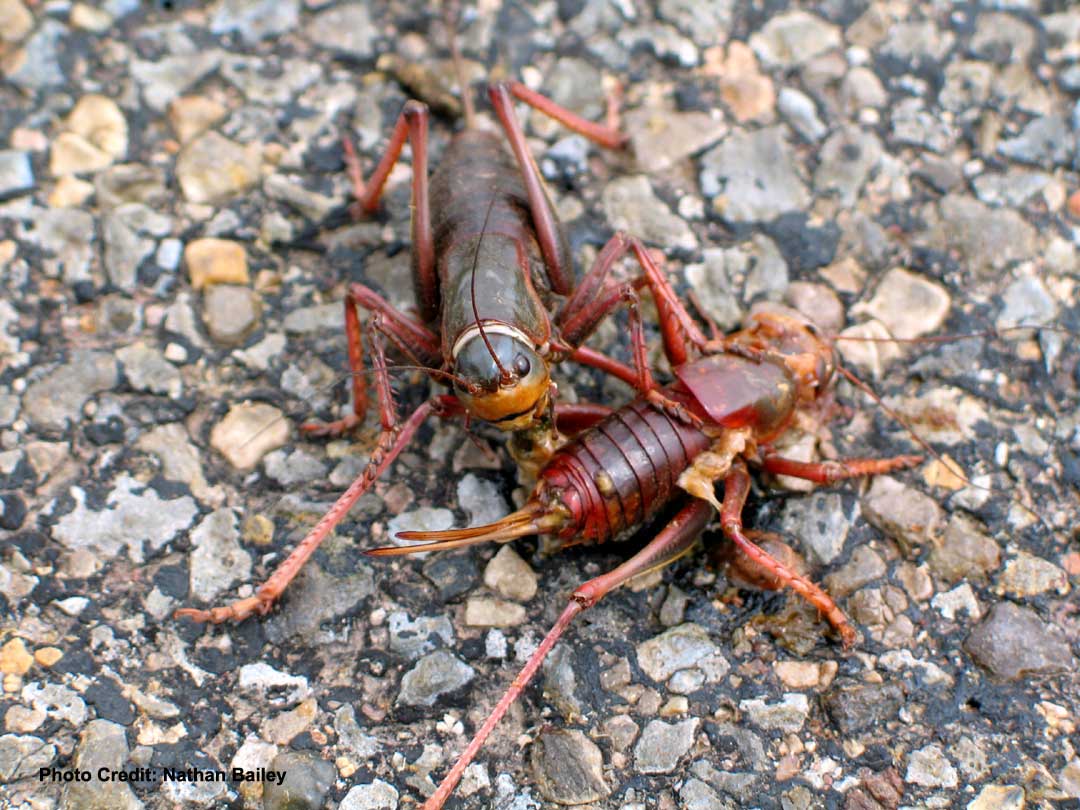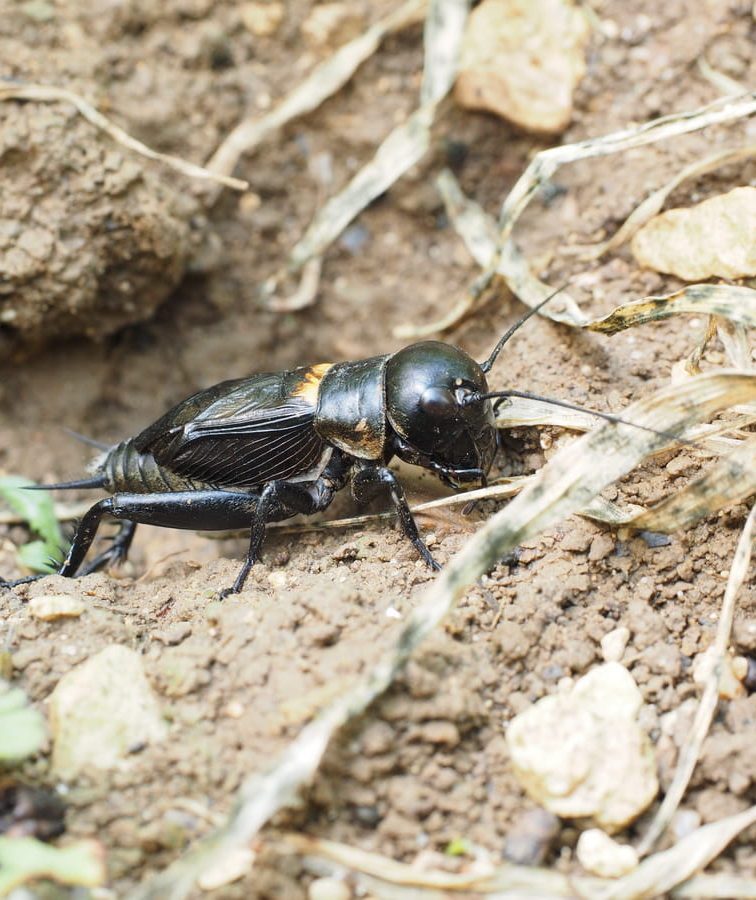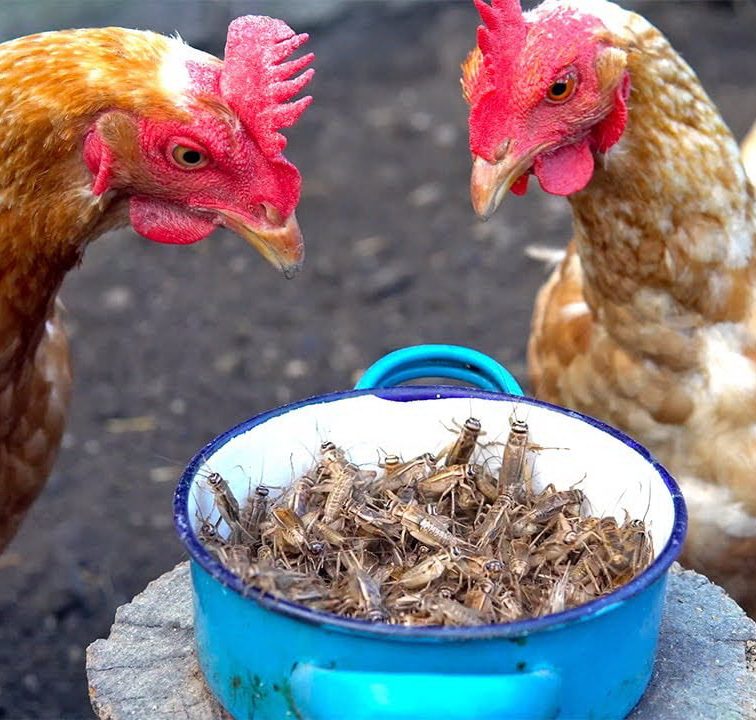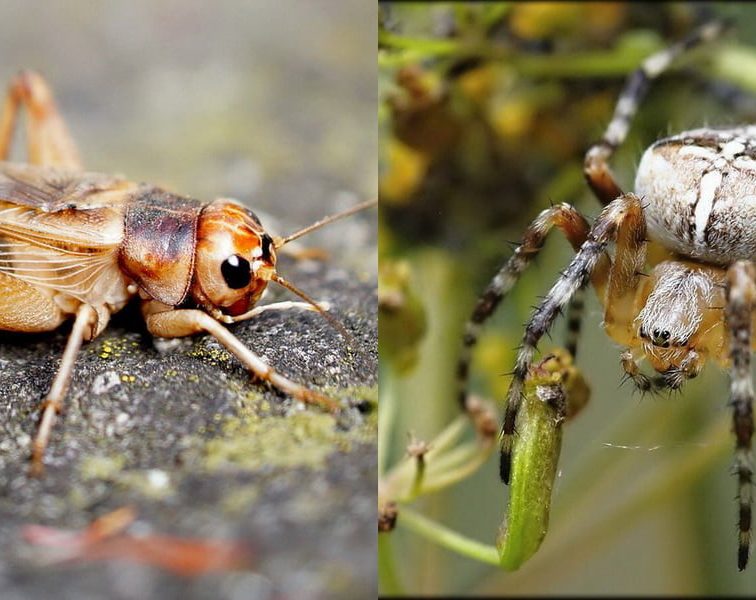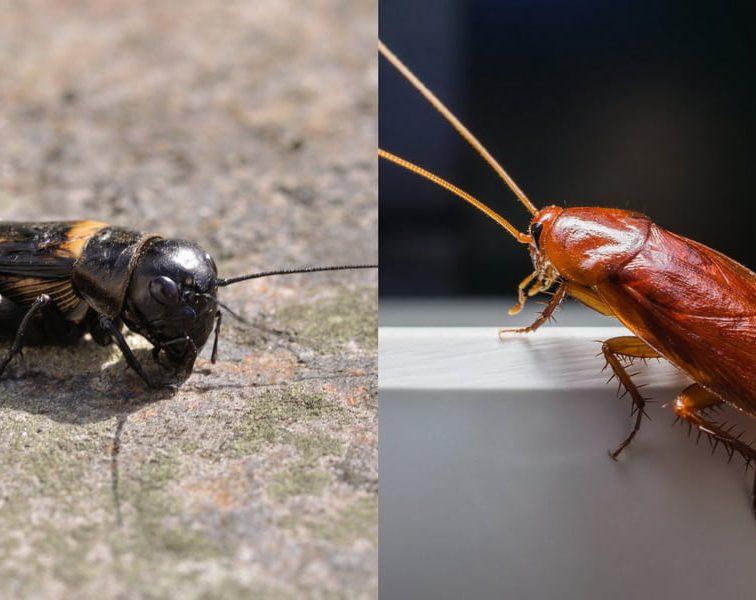Exploring the enigmatic behavior of ‘cricket cannibalism’, this article addresses the curious query: do crickets eat each other? Unraveling this aspect of their life, we investigate environmental triggers and survival instincts behind such behavior in these familiar insects.
Join us as we challenge preconceived notions, shedding light on the complex and often hidden world of crickets.
Habitat and Dietary Habits
Crickets, members of the Class Insecta, thrive in diverse habitats worldwide except for extreme polar regions. Preferring grasslands, forests, and urban areas, they are primarily nocturnal, hiding in dark, enclosed spaces like under rocks or in crevices during the day. These insects are characterized by their long antennae, jumping hind legs, and ability to fly in most species.
Omnivorous and opportunistic, crickets’ diet includes plant matter (fruits, leaves, seeds), insects (caterpillars, beetles, aphids), fungi, and sometimes, other crickets if food is scarce. Their feeding behavior makes them adaptable to various environments and important in ecosystems for controlling insect populations and recycling plant material. Crickets also serve as prey for various predators, playing a significant role in the ecological balance.
Cannibalistic Behavior in Crickets
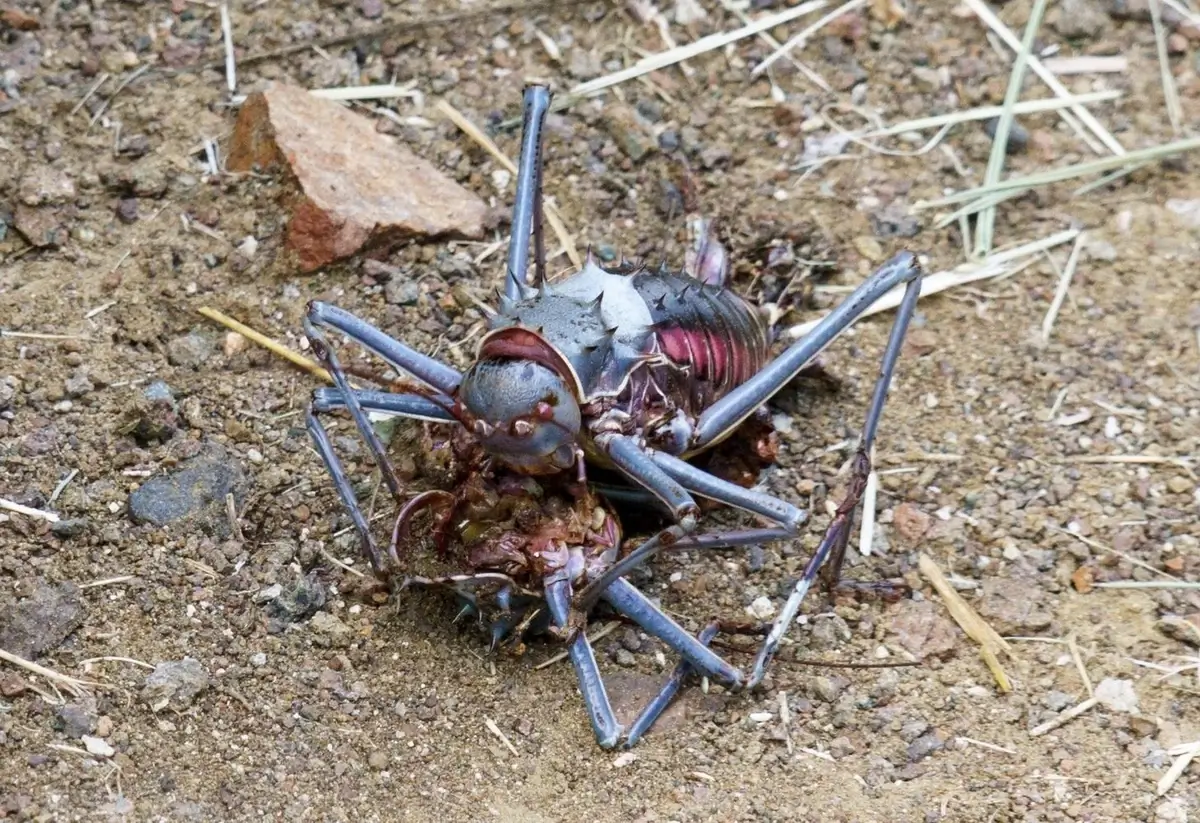
Image: Reddit
Cannibalism among crickets is a behavior influenced by various factors, primarily related to survival and environmental conditions. Studies on Mormon cricket swarms have provided valuable insights into this phenomenon.
Key Findings from Research:
- Orientation and Movement: Research observing Mormon cricket swarms in Utah highlighted that crickets not aligned with the swarm’s flow direction are more likely to be cannibalized. Those moving parallel with the swarm face a lower risk of being eaten. This behavior suggests that being part of the swarm’s collective movement offers a degree of protection against cannibalism, despite high population densities that could encourage such behavior.
- Nutritional Needs: Another study indicated that protein and salt are critical resources that drive cannibalism among crickets. Crickets themselves are a significant source of these nutrients in the field. The study found that when crickets were fed diets high in protein and salt, the incidence of cannibalism reduced. This suggests that crickets resort to cannibalism primarily as a means to satisfy their nutritional requirements, particularly for protein and salt.
- Gender Dynamics: In terms of initiating attacks, female crickets are more likely to start an attack, but males are more likely to kill their targets. This aspect of cricket cannibalism reveals a complex interplay of gender dynamics within the species.
- State-Dependent Changes: Experiments with different diets showed that crickets’ propensity to cannibalize changed depending on their nutritional state. Specifically, crickets deprived of protein were more likely to engage in cannibalistic behavior, underscoring the importance of dietary balance in preventing such behavior.
Cannibalism in crickets is a complex behavior influenced by orientation within a swarm, nutritional needs, and gender dynamics. Understanding these factors is crucial for comprehending the ecological and evolutionary implications of cannibalism in crickets and other similar species.
Factors Leading to Cannibalism
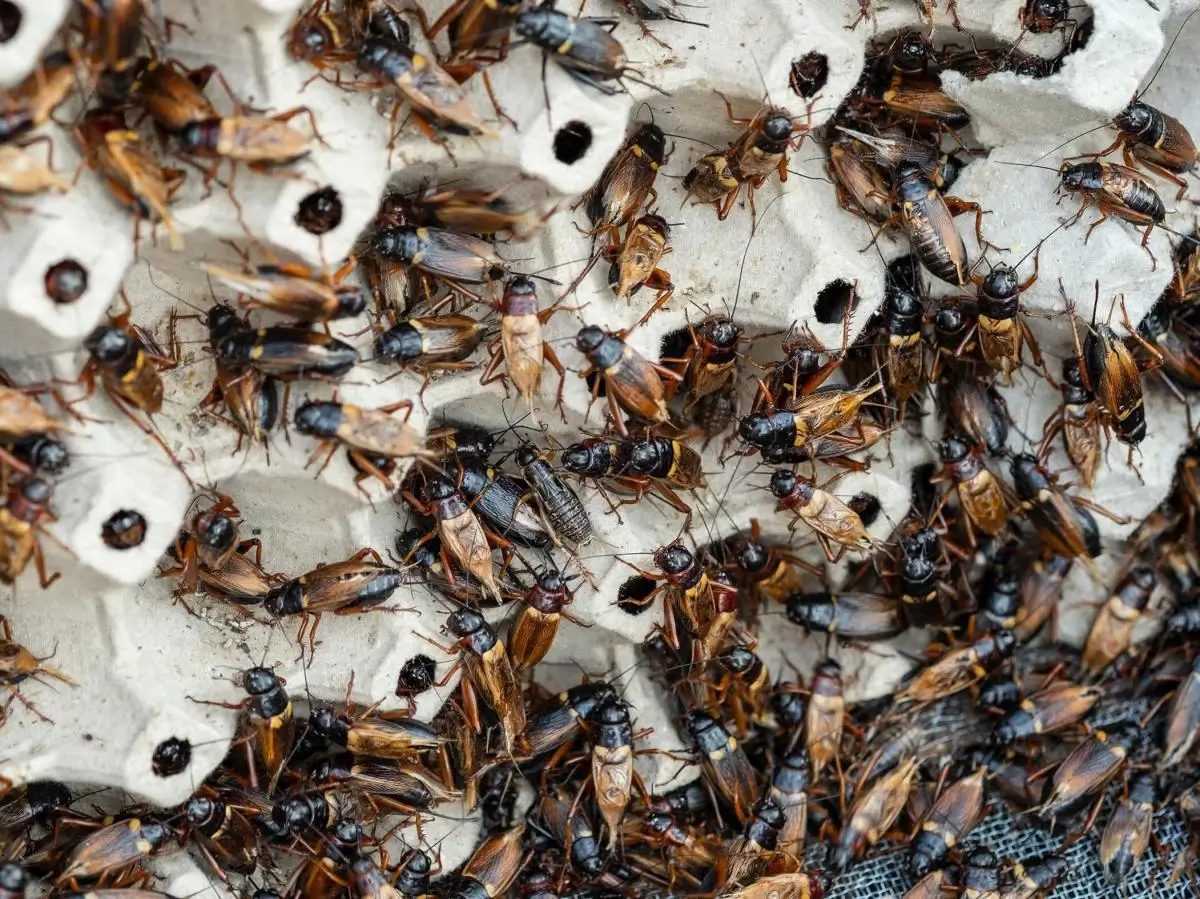
Crickets overcrowding leads to cannibalism. Image: storables.com
Cannibalism in crickets can be triggered by various factors, each influencing their behavior in different ways.
- Overcrowding: When the habitat becomes too crowded, crickets are more likely to engage in cannibalism. The limited space increases stress and competition for resources, leading to aggression. This behavior can be mitigated by providing a larger area with more hiding spots for the crickets, reducing the likelihood of cannibalistic incidents.
- Food and Water Scarcity: A lack of sufficient food and water is another significant trigger for cannibalism among crickets. When their basic needs are not met, crickets may resort to eating each other as a survival strategy. Ensuring a consistent and adequate supply of food and water can help prevent this behavior.
- Environmental Conditions: The environmental conditions, including humidity and cleanliness, can also influence cricket cannibalism. Crickets prefer somewhat dry environments, and very high moisture levels can lead to discomfort and erratic behavior, potentially resulting in cannibalism. Maintaining proper humidity levels (between 60% and 75%) and ensuring the habitat is clean are important factors in preventing this behavior.
- Nuptial Feeding and Predation on Offspring: Cannibalism in crickets also includes instances of nuptial feeding, where a female may eat the male after mating, and adults consuming their young. To prevent adults from eating their offspring, it’s crucial to separate them until the young crickets have grown stronger and undergone several molts.
In summary, managing the environmental factors, such as space, food, water, and habitat conditions, is key to preventing cannibalistic behavior in crickets. Monitoring these aspects closely can help maintain a healthy cricket population.
Conclusion
In addressing the question, “Do crickets eat each other?”, it’s evident that cannibalism in crickets is a complex behavior influenced by environmental conditions, food availability, and population density.
Effective prevention in both natural habitats and cricket farms involves ensuring sufficient food and water supply, managing overcrowding, maintaining optimal humidity and cleanliness, and adopting suitable breeding methods.
These strategies not only reduce cannibalistic tendencies but also contribute to the overall health and sustainability of cricket populations. Understanding and implementing these measures are key to maintaining a balanced ecosystem and productive cricket farming practices.


